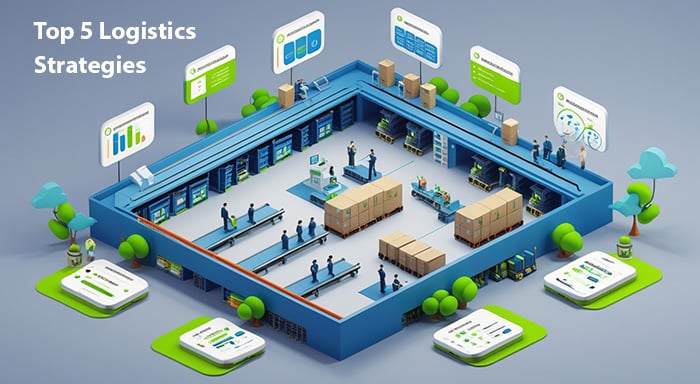Running a delivery business today takes more than just moving goods from one place to another. There are more orders, higher customer expectations, and tighter timelines. To stay on track, businesses need better ways to manage work and keep things moving without problems.
Simple tools and clear strategies can make daily operations easy and more effective. Small improvements can lead to better results when used with the right approach. It can help you with everything from saving money to getting products delivered faster.
We are here to help you with the best starter guide. In this article, you'll find five easy strategies that can help your team work smarter. Each one is designed to bring steady progress without adding stress.
Train Your Team for Operational Readiness
Building an efficient logistics operation starts with a well-prepared team. No matter how advanced the tools you are using, results depend on the way people use them. Thus, if your staff understand their roles, systems, and daily tasks, everything runs more smoothly. It reduces the chances of delays and mistakes.
Training doesn't have to be complicated or time-consuming. So, you can add brief learning sessions, step-by-step instructions, and easy-to-use checklists. These efforts produce a more confident, responsive workforce that can manage day-to-day challenges with ease. Over the long term, regular training brings real value that even the best technology can't fully substitute.
Utilize the Transportation Management System (TMS)
Smart transportation management systems can help track the movement of the orders; it makes order management easier. TMS reduces the need to switch between multiple systems as it connects with the other tools in your system. Having such a tool on the bucket helps businesses track order status, manage delivery stages, and avoid manual updates that slow things down.
In addition, one important advantage is the way it supports automatic data synchronization with CRM posts, billing apps, and order modules - all in one place. These features also improve the follow-up on shipments. It provides clear and updated details. In short, using this tool helps companies' complete tasks with a lower error rate.
Focus on Better Inventory and Warehouse Management
Knowing what's in stock and where it's stored helps avoid late shipments and missed sales. A smart setup inside the warehouse makes it easier to find items quickly. Tools that track product levels in real time can send alerts when items are running low. This helps businesses restock before problems happen and keeps everything running smoothly.
Workers can also save time by using scanners or mobile devices to update records. This makes fewer errors than writing things down by hand. It also helps managers see what items are moving fast and which ones are not. By improving how items are stored and handled, orders can be filled out faster, and fewer mistakes are made.
Vitalize Customer Communication and Support
Clear communication with customers is the key to building their trust and avoiding confusion. Keep the customers informed about the delivery process and the expected date of arrival. This can be achieved by conveying live updates of the process, making them less skeptical and worried. For example, inform the customer about when a package is dispatched, update them if there are any delays, and inform them about its arrival.
It should be easy to be able to reach your support team. Irrespective of the medium, namely, email, chat, or phone, fast replies indicate that a business cares. Assured and trusting customers are more likely to return and convey their good experience to others. Tools like TMS can be used to automate sending updates or let customers have easy access to be able to check their updates on their own.
Strengthen Relationships with Partners and Suppliers
Good relationships with outside partners and suppliers are essential for the functioning of a good logistics business. These can be transportation providers, warehousing allies, and suppliers. Continuous communication and mutual expectations keep everyone aligned and avoid misunderstandings. When these are established and rooted in trust, day-to-day operations are less affected.
Exploring a reliable China sourcing alternative can help logistics companies reduce risks and diversify their supply chains. Smart sourcing strategies across Asia are becoming essential in today’s evolving logistics landscape. By not depending on a single region or supplier, businesses can avoid major disruptions and improve supply chain flexibility.
Building solid partnerships doesn't take fancy tools. It begins with simple service contracts, sound contact points, and honest feedback. When partners feel heard and included, they'll be quicker to respond and resolve issues. This sort of collaboration reduces delays, avoids stock problems, and makes your entire supply chain more reliable.
Conclusion
A successful logistics business can be achieved with small and smart steps. Incorporating the above strategies can help reduce delays, avoid errors, and improve the way your team works every day. Utilizing the right tools and training people can increase the pace of your business, ensuring faster services and better customer satisfaction. Incorporate one step at a time and be consistent to build a system for your business that supports steady growth.



